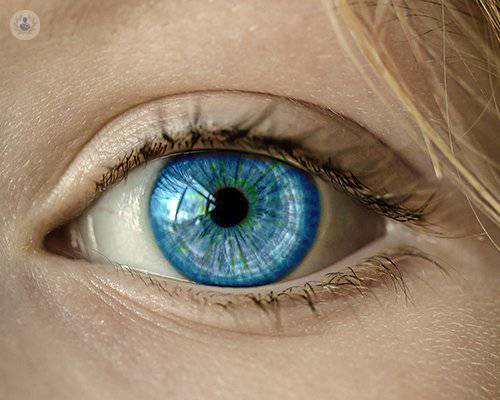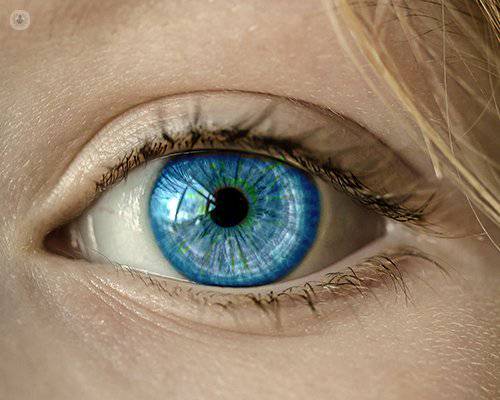
What is Fuchs' endothelial dystrophy?
Fuchs' endothelial dystrophy is an ophthalmological condition which mostly affects women over forty who have a family history of the illness.

Cornea guttata is the initial alteration in Fuchs' endothelial dystrophy, a corneal illness that develops over various phases. It is a common illness that affects the eyes. It is characterised by the loss of cells from the deepest layer of the eyes, the endothelium. The cornea has 5 layers: the epithelium, Bowman's membrane, the stroma, Descemet's membrane and the endothelium.
Fuchs dystrophy is more common in women. In half of all cases, there is a family history of the Fuch's dystrophy. It shows up from around the age of 40 and progresses slowly.
Clinical overview
Fuchs dystrophy develops in four phases: cornea guttata, corneal oedema, keratopathy and fibrosis.
- In the first cornea guttata phase the patient does not usually show symptoms. However, in an examination an ophthalmologist will find dark drop-shaped spots located on the innermost layer of the cornea: the endothelium. These “drops” grow and progressively spread from the centre of the cornea out to the edges. Microscopic brown spots also appear.
- In the second phase of Fuch's dystrophy, oedema appears in the cornea: it gradually collects excess liquid in the cornea. This produces a loss of transparency in the cornea and the patient notices a loss of vision.
- Bullous keratopathy. When the epithelial oedema is persistent, microscopic blisters (ampoules) form in the epithelium, which then burst and cause pain and corneal ulcers.
- In the final stage, fibrosis appears in the stroma. These are “scars” that are not transparent and cause blurred vision.
How is Fuch's dystrophy treated?
In the initial phases of cornea guttata and light corneal oedema, eyewashes and anti-oedema creams are used. In more advanced phases, the current surgical treatment is an endothelial transplant or cornea transplant. It achieves good results in most cases. It involves substituting the affected endothelium with a healthy one from a donor. The two types of endothelial transplant are DSAEK (Descemet Stripping automated endothelial Keratoplasty) and DMEK (Descemet Membrane Endothelial Keratoplasty).

